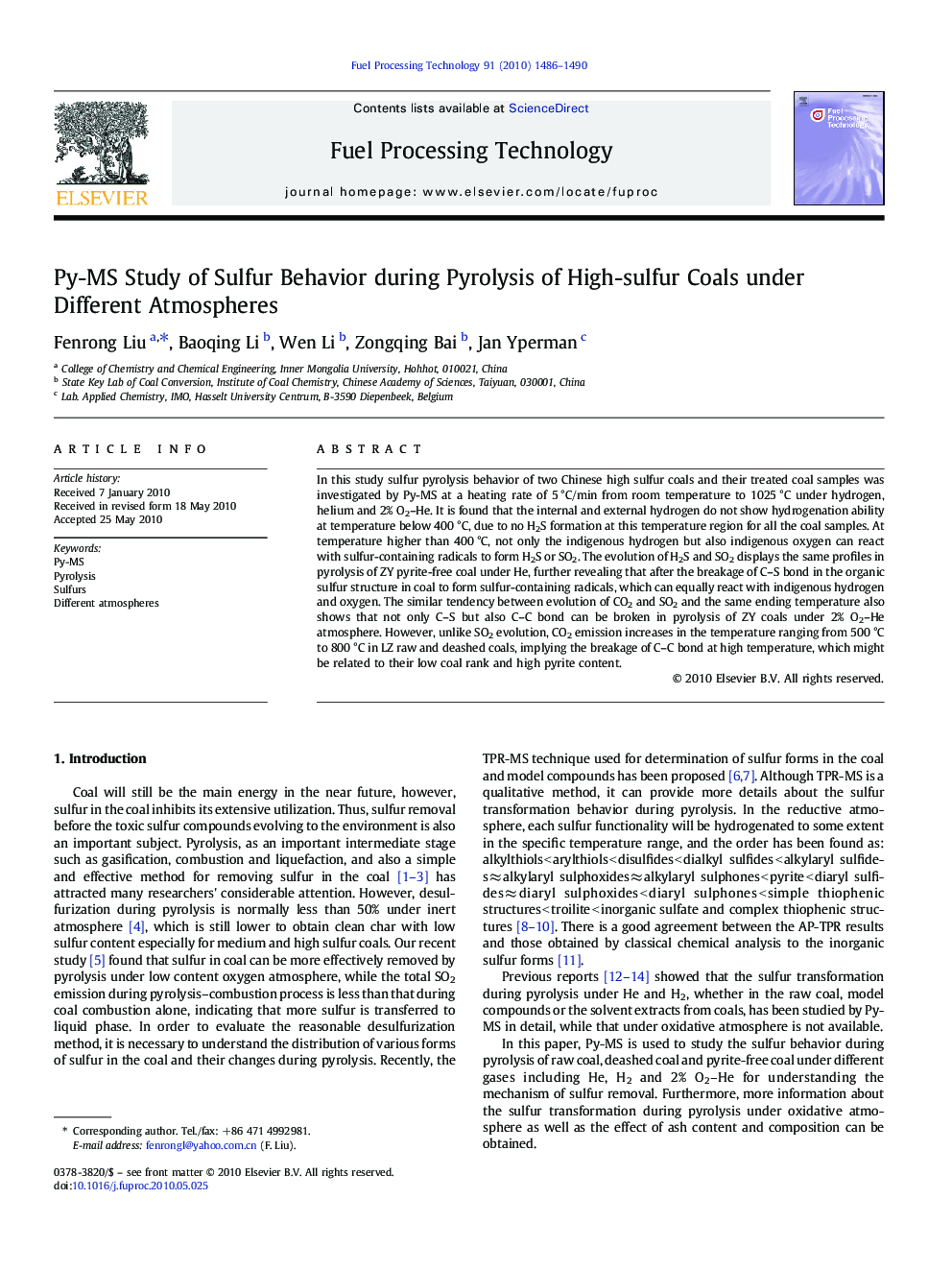| Article ID | Journal | Published Year | Pages | File Type |
|---|---|---|---|---|
| 210631 | Fuel Processing Technology | 2010 | 5 Pages |
In this study sulfur pyrolysis behavior of two Chinese high sulfur coals and their treated coal samples was investigated by Py-MS at a heating rate of 5 °C/min from room temperature to 1025 °C under hydrogen, helium and 2% O2–He. It is found that the internal and external hydrogen do not show hydrogenation ability at temperature below 400 °C, due to no H2S formation at this temperature region for all the coal samples. At temperature higher than 400 °C, not only the indigenous hydrogen but also indigenous oxygen can react with sulfur-containing radicals to form H2S or SO2. The evolution of H2S and SO2 displays the same profiles in pyrolysis of ZY pyrite-free coal under He, further revealing that after the breakage of C–S bond in the organic sulfur structure in coal to form sulfur-containing radicals, which can equally react with indigenous hydrogen and oxygen. The similar tendency between evolution of CO2 and SO2 and the same ending temperature also shows that not only C–S but also C–C bond can be broken in pyrolysis of ZY coals under 2% O2–He atmosphere. However, unlike SO2 evolution, CO2 emission increases in the temperature ranging from 500 °C to 800 °C in LZ raw and deashed coals, implying the breakage of C–C bond at high temperature, which might be related to their low coal rank and high pyrite content.
